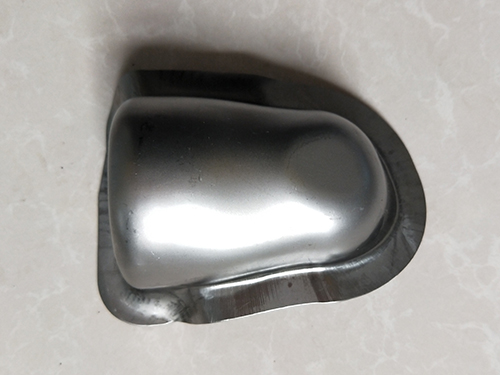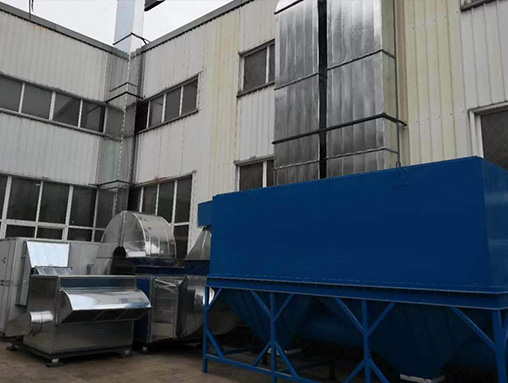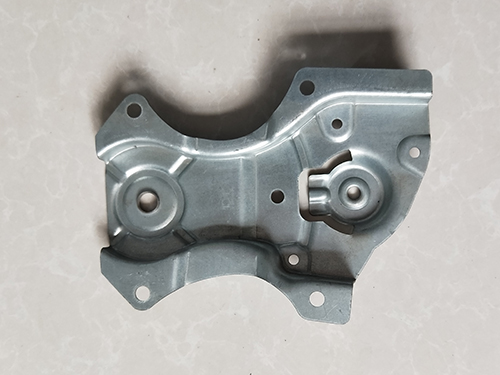Classification of Stamping Processes and Analysis of Dimensional Accuracy for St
Stamping is mainly classified by process and can be divided into two categories: separation process and forming process. The separation process, also known as punching, aims to separate the stamped parts of automotive parts from the sheet metal along the contour line, while meeting the quality requirements of the separated section. The purpose of the forming process is to cause plastic deformation of the sheet metal without damage, and to produce workpieces of the desired shape and size. In actual production, multiple processes are often integrated into one workpiece. Punching, bending, shearing, stretching, bulging, spinning, and straightening are several main stamping processes.
For automotive coverings, surface quality is particularly important, in addition to considering body metal stamping parts; In addition to the general process characteristics, the surface should not have defects such as ripples, wrinkles, dents, scratches, and indentations. The edges should be clear, straight, the curves should be smooth, and the transitions should be uniform. In addition, car coverings also need to have high dimensional accuracy to meet the accuracy requirements of welding and assembly. In practice, various defects are often encountered during trial molding or production processes. Below we will mainly analyze the following defects.
1. Burr
Burrs are a common problem encountered in cutting sections. If there are high and thin burrs around the workpiece, the main reason is that the clearance between the convex and concave molds is small or the cutting edge is worn. This can be solved by adjusting the clearance or grinding the convex or concave molds. If there are high and thick burrs around the workpiece, it is due to excessive gap, and the gap between the convex and concave molds needs to be increased.
2. Wrinkles and wrinkles
The wrinkling of flanges and simple walls in stretched parts is mainly caused by the compression deformation of the sheet metal during stretching. During stretching, due to the tangential compressive stress of the flange material, when this compressive stress reaches a high level, the sheet metal will arch in the tangential direction due to instability. This continuous bending that produces wavy shapes around the flange is called wrinkling. Usually, increasing the tensile stress inside the board is used to wrinkle. When wrinkles are evenly generated around the workpiece, it should be due to insufficient pressing force. Gradually increasing the pressing force can cause wrinkles.
When stretching conical and hemispherical parts, most of the material is in a suspended state at the beginning of stretching, which is prone to wrinkling of the side walls. Therefore, in addition to increasing the edge pressure, it is also necessary to use additional stretching bars to increase the radial tensile stress and wrinkling of the board. Add stretching bars at appropriate positions. At the beginning of stretching, the material around the sheet metal is compressed by the stretching bars, which control the resistance of each section of the sheet metal flowing into the concave mold, increasing the radial tensile stress of the sheet metal. By continuously changing the position, quantity, fillet radius, height, etc. of the stretching ribs, the radial tensile stress can be adjusted to reduce or avoid wrinkling of the workpiece. To prevent wrinkling, the blank can be limited from arching by applying pressure to the edge ring.
When designing stretching parts, if there is excess metal in the parts with rapid shape changes, the material is prone to flow and may wrinkle. It is necessary to consider adding convex ribs in the process of supplementing this part, so that the excess metal flows into the convex ribs during the stretching process, fully absorbing the excess material and preventing wrinkling.
In addition, reducing the degree of tensile deformation and increasing the thickness of the blank can also reduce the tendency towards wrinkling.
3. Rupture
Fracture is the main manifestation of tensile instability in thin plate stamping forming. When the tensile deformation force is greater than the actual tensile strength of the material in the transmission zone, the sheet metal is pulled apart. Adjusting the pressing force to reduce it, or adjusting the tension gap to increase the gap and make it uniform, can solve the problem of tensile fracture.
During the stretching process, parts with deep stretching or window reverse stretching forming are prone to tearing, which can be solved by adding process cuts or process holes. Before stretching, punching process holes at the locations of significant deformation in the workpiece can change the stress state during the stretching process and reduce the amount of deformation. The process incision should be removed in the subsequent edge cutting process, especially for the outer covering parts, to avoid affecting the appearance quality of the parts.
4. Rebound
There is a large amount of bending deformation during the drawing process, and when the drawing process is completed, there are still residual stresses in the thickness direction of the sheet metal. When the mold is closed, these residual stresses maintain a balanced relationship with the contact force of the mold. After the mold is opened, these residual stresses will cause the formed parts to rebound, resulting in deviations between the final dimensions of the parts and the expected dimensions.
Rebound is one of the main defects in sheet metal forming process, and it is also one of the difficult forming defects to overcome in actual technology. In recent years, many researchers have studied it and proposed many solutions and computer simulation algorithms. The compensation technology for springback machining surfaces based on the combination of springback simulation and testing will be an important way to solve this problem in the future.
There are many reasons for wrinkling and cracking of stretching parts during the stretching process, which are not only related to the rationality of the stretching die design process, but also to the processing quality of the die (surface accuracy, hardness, etc.) and the accuracy of the press (slider parallelism, etc.). The traditional design and manufacturing model involves manually designing and drawing two-dimensional graphics, followed by processing. When problems arise, workers rely on their experience to modify the mold, which is then tested. In recent years, with the application and development of computers and the maturity of finite element methods, various simulation techniques have been developed, which have played an increasingly important role in reducing or even eliminating the trial molding process, shortening product cycles, and reducing costs.







